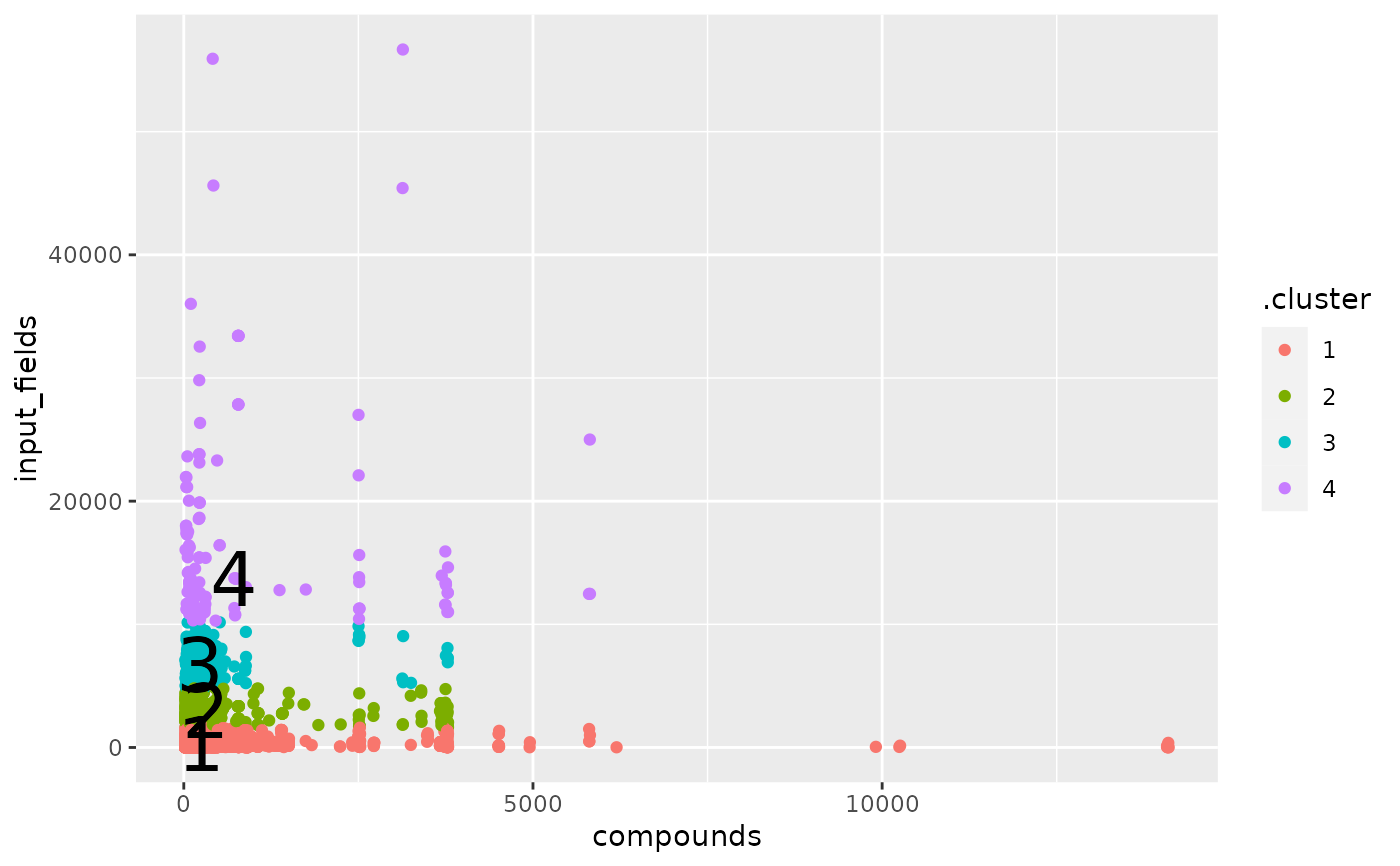Glance accepts a model object and returns a tibble::tibble()
with exactly one row of model summaries. The summaries are typically
goodness of fit measures, p-values for hypothesis tests on residuals,
or model convergence information.
Glance never returns information from the original call to the modeling function. This includes the name of the modeling function or any arguments passed to the modeling function.
Glance does not calculate summary measures. Rather, it farms out these
computations to appropriate methods and gathers the results together.
Sometimes a goodness of fit measure will be undefined. In these cases
the measure will be reported as NA.
Glance returns the same number of columns regardless of whether the
model matrix is rank-deficient or not. If so, entries in columns
that no longer have a well-defined value are filled in with an NA
of the appropriate type.
Usage
# S3 method for class 'pam'
glance(x, ...)Arguments
- x
An
pamobject returned fromcluster::pam()- ...
Additional arguments. Not used. Needed to match generic signature only. Cautionary note: Misspelled arguments will be absorbed in
..., where they will be ignored. If the misspelled argument has a default value, the default value will be used. For example, if you passconf.lvel = 0.9, all computation will proceed usingconf.level = 0.95. Two exceptions here are:
See also
Other pam tidiers:
augment.pam(),
tidy.pam()
Value
A tibble::tibble() with exactly one row and columns:
- avg.silhouette.width
The average silhouette width for the dataset.
Examples
# load libraries for models and data
library(dplyr)
library(ggplot2)
library(cluster)
library(modeldata)
data(hpc_data)
x <- hpc_data[, 2:5]
p <- pam(x, k = 4)
# summarize model fit with tidiers + visualization
tidy(p)
#> # A tibble: 4 × 11
#> size max.diss avg.diss diameter separation avg.width cluster
#> <dbl> <dbl> <dbl> <dbl> <dbl> <dbl> <fct>
#> 1 3544 13865. 576. 15128. 93.6 0.711 1
#> 2 412 3835. 1111. 5704. 93.2 0.398 2
#> 3 236 3882. 1317. 5852. 93.2 0.516 3
#> 4 139 42999. 5582. 46451. 151. 0.0843 4
#> # ℹ 4 more variables: compounds <dbl>, input_fields <dbl>,
#> # iterations <dbl>, num_pending <dbl>
glance(p)
#> # A tibble: 1 × 1
#> avg.silhouette.width
#> <dbl>
#> 1 0.650
augment(p, x)
#> # A tibble: 4,331 × 5
#> compounds input_fields iterations num_pending .cluster
#> <dbl> <dbl> <dbl> <dbl> <fct>
#> 1 997 137 20 0 1
#> 2 97 103 20 0 1
#> 3 101 75 10 0 1
#> 4 93 76 20 0 1
#> 5 100 82 20 0 1
#> 6 100 82 20 0 1
#> 7 105 88 20 0 1
#> 8 98 95 20 0 1
#> 9 101 91 20 0 1
#> 10 95 92 20 0 1
#> # ℹ 4,321 more rows
augment(p, x) |>
ggplot(aes(compounds, input_fields)) +
geom_point(aes(color = .cluster)) +
geom_text(aes(label = cluster), data = tidy(p), size = 10)

